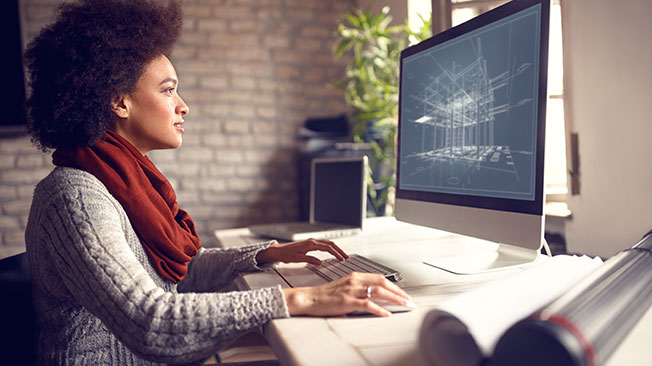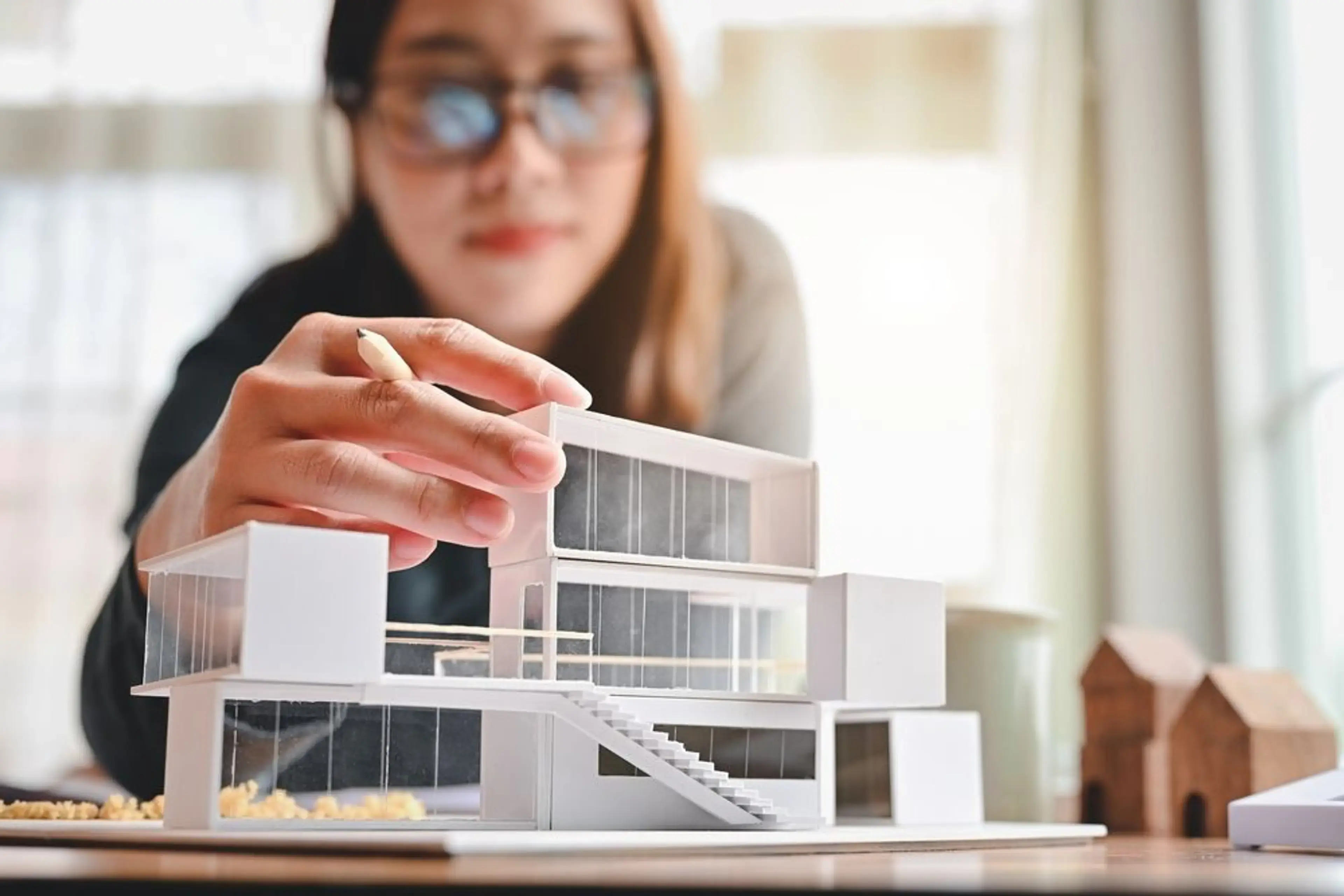Architect Marketing Strategies to Engage Luxury Clients
The Role of Sustainability and Innovation in Modern Architect Practices
Sustainability and modern technology are reshaping contemporary design in ways you could not expect. By accepting eco-friendly products and wise innovations, architects are not just producing buildings; they're crafting environments that enhance our high quality of life.
The Significance of Lasting Style
Lasting design is essential not just for the environment however also for boosting our quality of life. When you accept lasting layout, you're not just decreasing your carbon impact; you're producing areas that advertise health and wellness.
Furthermore, sustainable design frequently results in more powerful communities. When structures are created with environment-friendly practices, they can inspire others to do the same, promoting a culture of sustainability. You'll discover increased building values and a higher sense of satisfaction in your surroundings.
Finally, by prioritizing sustainability, you're buying the future. You're ensuring that future generations enjoy a healthier world and lively areas. When you consider your following project, assume regarding exactly how sustainable architecture can raise your life and those around you.
Cutting-edge Products Transforming Structure Practices
As you explore innovative materials in architecture, you'll find that naturally degradable building and construction products are reshaping exactly how we believe regarding sustainability. Recycled material innovations are offering new life to waste, while smart product innovations enhance building efficiency. These innovations not only advertise eco-friendliness however additionally push the borders of style.
Naturally Degradable Construction Products
While standard construction products typically add to environmental destruction, biodegradable construction materials are becoming a viable alternative that transforms building techniques. You can explore choices like hempcrete, mycelium, and bamboo, which not only minimize waste yet likewise advertise sustainability. These materials break down naturally at the end of their lifecycle, minimizing landfill contributions. By incorporating biodegradable alternatives into your designs, you're not just improving aesthetic allure; you're also making a favorable effect on the planet. And also, they typically require less energy to produce, further reducing your job's carbon footprint. As you adjust to these ingenious products, you'll discover that they use sturdiness and convenience, allowing you to create frameworks that align with modern values of sustainability and responsibility.
Recycled Content Technologies
In current years, cutting-edge products with high recycled content have actually revolutionized building methods, offering architects amazing new choices - Architect. You can now integrate products like recycled steel, which not just lowers waste however also boasts excellent stamina. Recycled glass is an additional great selection, giving aesthetic appeal while decreasing environmental impact

Smart Material Technologies
Smart product modern technologies are improving the method you assume concerning developing methods, offering dynamic options that adapt to changing conditions. These innovative materials, such as self-healing concrete and thermochromic glass, boost structure performance and sustainability. By integrating smart products, you can create energy-efficient designs that react to their atmosphere, decreasing general energy consumption.
The Assimilation of Smart Technologies in Style
As modern technology advances, incorporating wise remedies right into architectural layout comes to be vital for producing efficient and sustainable areas. You can integrate wise technologies like building monitoring systems, which optimize power use and boost occupant convenience. Sensing units can check ecological problems, readjusting lighting and temperature level immediately based on real-time data. This adaptability not just improves customer experience but additionally decreases energy usage.
Including Web of Points (IoT) devices permits seamless interaction among numerous building systems, allowing you to make data-driven choices that improve capability. Smart products that respond to ecological modifications can further improve your style, providing dynamic solutions to ever-changing problems.
Power Efficiency and Renewable Resource Solutions
While several architects concentrate on visual appeals, prioritizing power effectiveness and sustainable energy remedies is vital for sustainable design. You can start by integrating easy solar style, which maximizes all-natural light and heat, lowering reliance on fabricated lighting and heating systems. Make use of high-performance insulation and energy-efficient home windows to minimize power loss.
Don't ignore renewable resource systems-- set up solar panels or wind turbines to produce tidy energy on-site. You can likewise take into consideration including geothermal heating and cooling systems for an extra lasting temperature law.
By choosing energy-efficient devices and lights, you'll not only lower energy usage yet additionally reduced operational prices for building passengers.
Integrating these concepts into your designs not only profits the setting yet likewise boosts the building's allure and worth. Ultimately, your commitment to power performance and renewable power will establish your jobs apart in a competitive market.
Water Conservation Strategies in Modern Design
Incorporating water conservation strategies into contemporary style is necessary for developing sustainable buildings that reduce ecological impact. You can accomplish this by integrating rainwater harvesting systems, which store and collect rain for irrigation and non-potable usages. Executing low-flow fixtures and smart watering systems likewise decreases water intake, ensuring efficient use throughout the building.
Think about making use of drought-resistant landscaping, which needs less water and advertises biodiversity. Incorporating absorptive paving materials allows rain to infiltrate the ground, decreasing drainage and reenergizing groundwater supplies.
Additionally, setting up greywater recycling systems can repurpose water from sinks and showers for commode flushing or watering, additional preserving resources.
The Impact of Biophilic Style on Well-Being
Biophilic layout brings nature inside your home, and you'll see its favorable impacts on your wellness and joy. By boosting interior air top quality and linking you with all-natural components, these rooms can change your day-to-day experience. Let's explore how incorporating these functions can increase your general wellness.
Nature's Impact on Health and wellness
When you include components of nature into your surroundings, it can significantly improve your mental and physical health. Biophilic design, which emphasizes natural light, plants, and natural materials, cultivates a sense of link to the outdoors. Accepting biophilic layout is an action toward a healthier lifestyle.
Enhancing Indoor Air Top Quality
While lots of individuals focus on aesthetic get more info appeals and functionality in layout, improving indoor air high quality plays an essential role in your overall wellness. By including biophilic design aspects, you can boost air top quality normally. Focusing on these aspects in your layout will certainly not just boost your room yet also advertise a sense of calmness and health.
Link With Natural Aspects
When you get in touch with natural environments in your area, you not just boost its visual appeal however additionally considerably enhance your wellness. Biophilic style motivates you to incorporate functions like plants, all-natural light, and natural products. These aspects develop a calming atmosphere, decreasing tension and anxiousness. Research reveals that being around nature can improve your mood and cognitive feature, assisting you really feel more focused and productive. When you invite the outdoors inside, you may notice far better air high quality and enhanced comfort. Easy modifications, like adding a living wall or huge home windows, can profoundly impact your experience (Architect). Inevitably, incorporating nature into your atmosphere leads you to a much healthier, better way of living, cultivating a deeper connection to the world around you.
Future Trends in Sustainable Building Practices
As the world encounters pushing ecological difficulties, engineers are progressively welcoming ingenious approaches to sustainability that redefine just how we design and develop. You'll see a rise in biophilic design, integrating nature into urban areas to boost wellness and minimize power consumption. Smart innovations, like AI and IoT, are streamlining power management in buildings, optimizing resource use, and lessening waste.
Moreover, modular building and construction is obtaining grip, enabling faster, much more efficient building procedures while lowering environmental impact. Making use of lasting products, such as reclaimed wood and recycled steels, is ending up being common technique. As you explore these trends, expect a shift toward circular style, stressing the lifecycle of products and advertising reuse and recycling.
These forward-thinking methods not just address ecological concerns yet also produce much healthier, much more durable communities. By staying informed regarding these patterns, you can assist shape a lasting future in architecture.
Often Asked Questions
Just How Can Sustainability Affect Job Costs and Spending Plans?
Sustainability can substantially affect job prices and budget plans. You could find that initial investments in environment-friendly materials or technologies lead to lasting savings through power effectiveness, minimized waste, and prospective federal government rewards, inevitably stabilizing the overall expenditures.
What Certifications Exist for Lasting Style?
You'll find a number of certifications for sustainable architecture, including LEED, BREEAM, and the Living Structure Obstacle. These qualifications help you show your dedication to sustainability and can enhance your job's reputation and interest more info customers.
How Does Neighborhood Culture Impact Sustainable Style?
Neighborhood culture shapes lasting layout by showing neighborhood practices, materials, and worths. You'll locate that integrating neighborhood appearances and techniques not just appreciates heritage yet also improves the capability and acceptance of your click here architectural tasks.
What Role Does Client Education Play in Sustainable Practices?
Customer education's essential for promoting sustainable practices. When you educate clients concerning advantages, prices, and environmental influences, you equip them to make enlightened decisions, fostering a collective approach that improves the job's overall sustainability.

Just How Can Architects Gauge the Success of Sustainability Campaigns?
You can measure the success of sustainability campaigns by tracking power intake, evaluating material efficiency, and celebration responses from clients. Regular audits and comparisons versus criteria will aid you refine your techniques and display improvements properly.
By integrating clever materials, you can produce energy-efficient layouts that react to their environment, minimizing total power intake.While lots of architects concentrate on visual appeals, focusing on power effectiveness and eco-friendly energy options is essential for lasting layout. Biophilic style, which stresses natural light, plants, and organic products, promotes a feeling of link to the outdoors. Biophilic design urges you to incorporate features like plants, all-natural light, and natural products. As you explore these fads, anticipate a shift toward circular style, emphasizing the lifecycle of materials and advertising reuse and recycling.